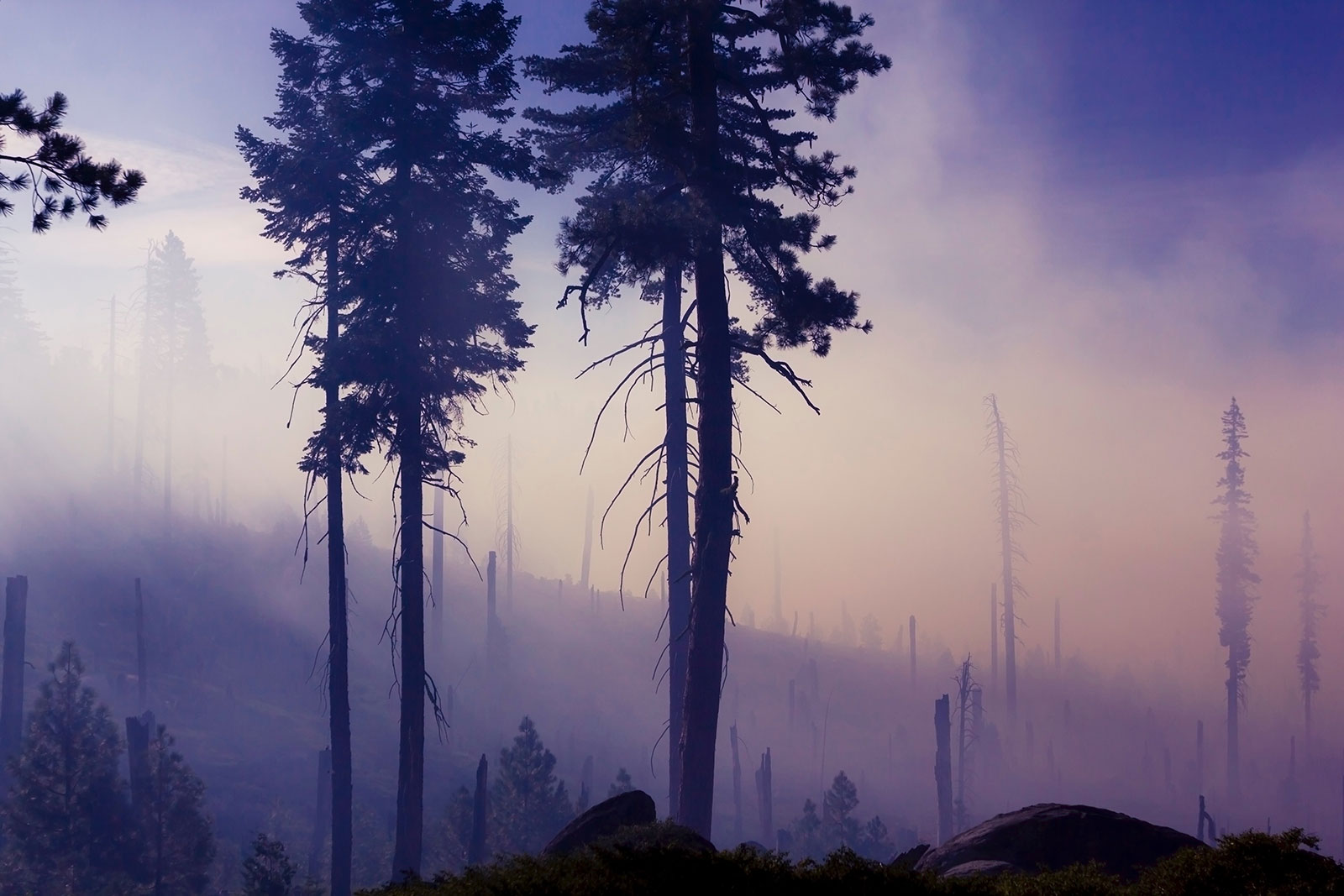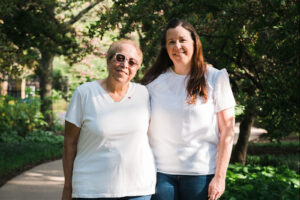Last fall, California suffered its worst wildfire season yet—two of the top 20 largest wildfires in the state’s history took place over the past year, the worst of which, named “Camp Fire,” destroyed more than 18,000 structures and resulted in 85 deaths, according to the California Department of Forestry and Fire Protection (CAL FIRE). The deadly fire covered an alarming 153,336 acres, burning cars, refrigerators, computers, and countless other hazardous materials, cloaking parts of California in fog-like smog for weeks.
Camp Fire was contained on Nov. 25, 2018, more than two weeks after it broke out, but air pollution lingers long after a blaze stops burning.
According to a July 2018 article in The Independent, the extensive damage caused during the recent wildfire season is in keeping with historical trends based on climate change—higher temperatures lead to increasing dryness, which increases the risk of wildfire. To put it into perspective, not since the Griffith Park fire of 1933 has a wildfire proven so deadly, and even then, the reported 29 deaths is significantly lower than Camp Fire’s 85 victims. This number doesn’t include the thousands of civilians and firefighters hospitalized.
The air quality index in Northern California rated above 100 or 150 during and in the aftermath of Camp Fire, according to a November 2018 article from the Associated Press. The air quality was “worse than air quality in China and India,” the article states. In another AP article, Dr. Ian Tong, Chief Medical Officer of the virtual care provider Doctor on Demand, said the air quality index in the Bay Area reached over 270 during the fire. This is a result of high levels of particulates in the air from burning homes and everything inside them. Even when smoke is not visible, hazardous particulates are still in the air, causing cancer, heart damage, immune problems, and lung problems, according to a November 2018 article from Stanford University. Because no longitudinal studies are available for long-term effects of exposure to wildfire smoke, little is known for what this could mean for residents in wildfire-ravaged areas, but it certainly can’t be good.
Physical effects aren’t the only cause for concern—the effects on mental health are just as significant. The American Lung Association (ALA) recommends limiting time outside during periods of high levels of air pollution, but months without exercise and sunshine take their toll, leading to depression and other mental illnesses that interrupt day-to-day life. Individuals with depression have a variety of means to address their symptoms, but there are very few effective ways to protect against air pollution.
Paper masks covering the mouth and nose are a common sight in polluted, urban areas of Asia, and now many California residents have begun to wearing them. While ordinary dust masks filter out large particles, they are not designed to filter dangerous particulates that may cause cancer, heart disease, and stroke, according to the ALA. Dust masks with an N-95 or N-100 filter will filter out the more damaging, finer particles, but can be difficult to use, especially for those with lung disease.
Individuals with depression can take medicine to treat their symptoms, but there are very few effective ways to protect against air pollution.
It is these vulnerable groups that are most at-risk for adverse health effects as a result of long-term exposure to wildfire smoke, such as those with compromised immune systems like cancer patients, the young who have underdeveloped lungs, the elderly, and the poor who might not be able to limit time spent outside. Firefighters are also considered a vulnerable group because they are frequently exposed, often setting up camps near the blaze in order to more easily bus firefighters in and out. As well, firefighters often don’t have time to shower and wash their clothes between shifts, so smoke settles on their skin for prolonged periods, according to a November 2018 article from SELF magazine.
If that’s not scary enough, there is also risk of asbestos exposure from the jostled bedrock of older homes during fires, according to Gene Gantt, executive director of the California State Firefighters. Asbestos is the most well-known carcinogen, causing the rare but deadly cancer mesothelioma, as well as cancers of the lung, larynx, and ovaries.
Camp Fire is not the first wildfire to raise concerns. The Rice Ridge Fire of 2017 burned for four months and cloaked the Seeley Lake valley of Montana in toxic smog long after the fire stopped burning. According to an article in Pacific Standard, one month after the fire’s smoke began lingering, emergency room visits for respiratory symptoms in nearby counties doubled from previously recorded data of a similar time period.
These repeated exposures raises risk—one could draw an analogy to cigarettes. “There’s evidence that, the more you smoke, the greater your risk of lung cancer,” says Curtis Noonan, an associate professor of epidemiology at the University of Montana, in Pacific Standard. “That’s not to say you couldn’t get cancer from just one acute exposure. That’s why repeated exposure is a relevant way to look at risk—because it increases the potential that that mechanistic pathway is getting triggered.”
Dr. Patrick Kinney, an air pollution epidemiologist and professor of environmental health at Boston University, makes a similar inference. “Certainly those very high levels [of pollution], even for a couple weeks, is of concern from a health point of view,” he says. “There are cases where […] people are exposed to very high levels of some dusty pollutant over a period of time, and then it goes away, and then they develop some sort of chronic illness,” Kinney says. He uses the profession of firefighter as an example: “A lot of [firefighters] end up developing chronic respiratory problems, and it’s an exposure that occurred very intensely for a relatively short amount of time.”
But this is where the data runs out. Because there are currently no longitudinal studies for health effects due to long-term exposure to air pollution caused by wildfires, this data is hard to collect. “It’s kind of challenging from an epidemiological point of view to kind of separate out the wildfire smoke from general air pollution.”
High turnover rates in occupations like firefighting, limited funding, and access to medical records are just a few of the roadblocks in carrying out long-term studies.
He considers this a “methodological challenge,” adding, “If you’re looking at changes in air pollution around a fire event, is it the fire smoke or is it the air pollution in general, or which amount of which is it, that might be causing health effects.”
High turnover rates in occupations like firefighting, limited funding, and access to medical records are additional roadblocks in carrying out long-term studies. John Balmes, a professor of environmental health sciences at the Berkeley School of Public Health, told Pacific Standard, “Even researching the effects of smoke on firefighters—who, with their regular and intense exposures to wildfires, are among the worst affected—can be difficult.” In one study, Balmes tracked a group of firefighters during a fire season, but was unable to secure funding to follow up on their health the following season—“A progression that could have shed light on the long-term effects of smoke,” the article states.
Even so, there is enough evidence to suggest that individuals with chronic illnesses or cancer should be wary of exposure to air pollution for any amount of time. “People who have pre-existing diseases like cancer or cardiovascular disease tend to be more sensitive to environmental stresses like air pollution in general,” Kinney says. “We [don’t have much] actual evidence for wildfire smoke and [its affect on] cancer patients, but from what we know in general about air pollution, that would be a safe bet.”
Kinney continues: “Most of the studies so far have been looking at acute responses […] such as people going to the hospital, being admitted, on the day of or day after the smoke occurs.” Most are being admitted for respiratory issues, but once these individuals feel better, concern should still remain. “The thing about cancer—from what we know about air pollution—it takes a long time [over] many years of exposure before cancer becomes evident,” Kinney says.
It will likely take decades before researchers are able to provide evidence and speak plainly about cancers definitively caused by short- or long-term exposure to wildfire smoke, but from what can be gathered from current studies, this is something the public could expect. “We know that lung cancer is one of the outcomes that’s promoted by exposure to higher levels of general air pollution, so we assume that pollution in general, even from wildfires, would probably have similar effects,” Kinney says.







